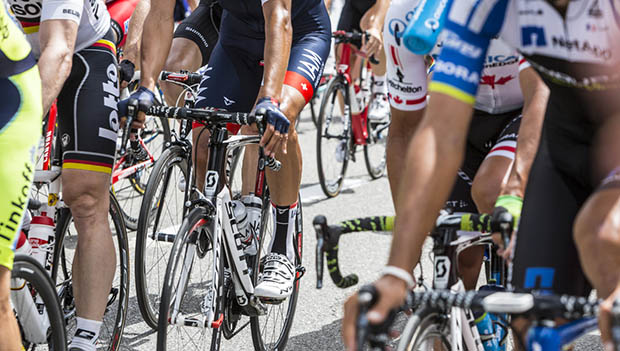
About his victory in the Tour de France and racing drug free, Bradley Wiggins (Team Skye) said, "It's all these small little percentages now that make the difference in sport...little things like the warming down, or Dario (Cioni) constantly topping up my hydration all the time...and getting to bed early, you know—having a chef on the Tour so your food is meticulously prepared—the food and that is where all the marginal gains are now, all these small little things now.
"That's what makes the difference now."
What can we learn so that we ride better? I investigated what the Skye, Garmin Sharp and Radio Shack Nissan Trek riders eat and drink.
More: Calculate Your Nutritional Needs
A Lot of Calories
A racer burns 3,500 to 4,000 calories on an average day in the Tour de France and 5,000 to 5,500 on a big day.
Breakfast Is Big
Racers eat a big breakfast so they start off with a full load of fuel and they eat several hours before the race to allow time for the meal to digest. My friend Barb Grealish is the chef for Garmin for domestic stage races. She prepares the biggest vat possible of oatmeal with blueberries and an egg station to fix eggs to order. Riders eat 1-2 bowls of oatmeal and 2-4 eggs. Some riders eat corn-based cereal, which is gluten-free.
Racers Drink a Lot
Depending on conditions, racers down 1-3 16 fluid-ounce(0.5 L) bottles every hour. Depending on preferences and stomach issues, a racer drinks water, sports drink and Coke. Most teams use a commercial sports drink. A few outsource custom drink mixes and have them tested for purity to be sure they won't present problems with drug testing.
Racers Eat a Lot
Even though they are racing hard, racers consume 300 or more calories an hour. They eat sports bars and gels provided by the team sponsors. Since they are racing nearly 21 days in a row in the Tour de France, they also eat real food to provide variety and additional calories. During a stage they'll eat boiled potatoes, rice cakes, panini (small sandwiches) and cut-up fruit to provide an assortment of flavors. Providing a lot of variety is the key to getting through three weeks of racing without bonking.
More: Breakfast: The Most Important Meal of an Athlete's Day
Fuel Sources
At race paces, the racers are burning almost exclusively glycogen (from carbohydrates) for energy.
Carbohydrates
Racers eat primarily carbohydrates with a high glycemic index for instant energy.
Glycemic Index (GI)
GI measures how fast a food causes your blood glucose to rise. Glucose has a GI of 100. Here are some examples:
- Sushi rice, favored by the pros, has a GI of 85.
- Gatorade has a GI of 89 and GatorLode has a GI of 100.
- Power Bar and Clif bar have GIs ranging from 50 to 60 depending on flavor; 55 is considered a low GI.
- Gels generally have a high GI near 100.
We are often told to avoid foods that will give us the sugar rush (i.e., have a high GI) because if we eat them, then we'll have a low blood sugar crash. However, this is not true when exercising, especially when exercising hard. Pro racers stop eating solid food with a lower GI toward the end of a stage and opt for gels and sugary drinks.
- 1
- of
- 2









Discuss This Article